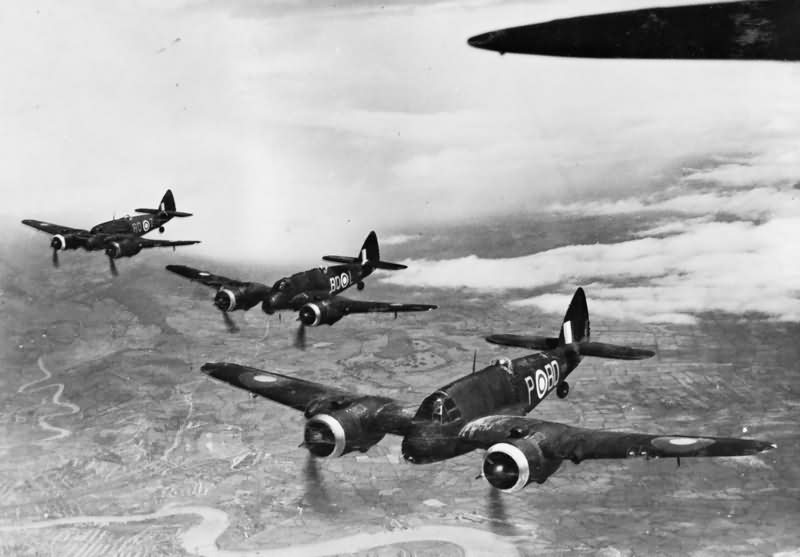The Bristol Beaufighter Mk.I was a versatile, twin-engine aircraft developed for both Coastal and Fighter Command by the Bristol Aeroplane Company during World War II. Designed as a long-range, day-and-night fighter, it played an essential role in the RAF’s defense, particularly as a night fighter.
Key Specifications of the Beaufighter Mk.I:
Powerplant and Performance:
- Powered by two 1,400-horsepower Bristol Hercules III radial engines, later variants used Hercules X and XI engines.
- Maximum speed: 323 mph (517 km/h) at an altitude of 15,000 ft (4,572 m); a variant with the Hercules XL engine achieved 330 mph (530 km/h) at 16,000 ft (4,875 m).
- Climb rate: 1,850 feet per minute.
- Service ceiling: 30,000 feet (9,145 m).
- Range: 1,100 miles (1,760 km).
- Endurance: 5.65 hours.
Dimensions:
- Wingspan: 57 ft 10 in (17.62 meters).
- Length: 41 ft 4 in (13 meters).
- Height: 15 ft 10 in (4.83 meters).
- Wing area: 503 sq ft (46.73 sq meters).
Weight:
- Empty weight: 13,800 lb (6,260 kg).
- Maximum loaded weight: 21,120 lb (9,580 kg).
Armament:
- Equipped with a formidable array of weaponry:
- Four 20 mm Hispano cannons mounted in the forward fuselage.
- Six 0.303-inch (7.69 mm) Browning machine guns, each with 1,000 rounds.
Radar and Night Fighter Capabilities:
- Initially, the Beaufighter Mk.I was fitted with AI Mk.IV radar, which significantly improved its night-fighting ability compared to earlier aircraft like the Blenheim.
- With the introduction of centimetric radar (AI Mk.VII and Mk.VIII) in April 1942, the Beaufighter was adapted with a Bristol-designed fiberglass radome, further enhancing its night interception capabilities.
Operational Use:
- The Beaufighter Mk.I entered service with Fighter Command in September 1940 and became a significant asset in Britain’s night defense.
- It remained in front-line service until June 1943 and was extensively used in night-fighter training by Operational Training Units (OTUs) until the end of the war.
